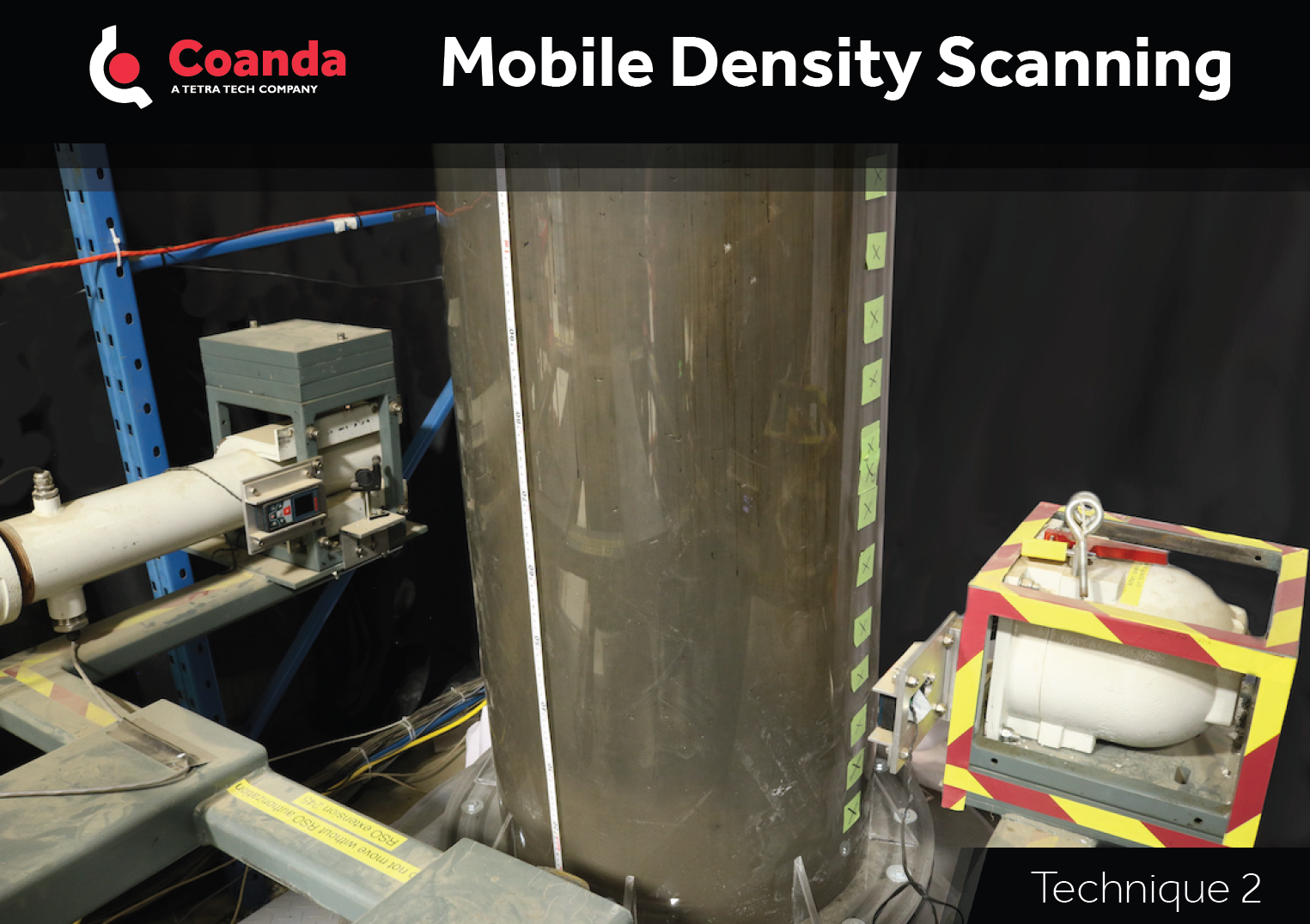Mobile Density Scanning
Posted on June 3, 2021 Instrumentation & Equipment Design
Often, density is related to a key performance indicator in one of our experimental programs. In a recent project, we deposited treated tailings into a number of large geocolumns, where their consolidation is studied over time.
To measure density as a function of height we move a nuclear density gauge and detector up and down the geocolumns using a forklift attachment we designed for this purpose.
Laser tape measures mounted to the assembly allow us to measure the same elevations and compensate for differences in secondary scattering due to position repeatability across scans that may occur years apart – but such coarse corrections are not always acceptable.
In experiments where absorption and secondary scattering changes drastically with position, such as liquid holdup in metallic mist eliminators, we’ve used precision traverses, collimation, absorption plates, and temperature-dependent positioning.
Experience, sometimes along with radiation scattering simulations specific to the geometry and materials, inform our decisions and brainstorming on what calibration and secondary-scattering mitigation strategies will be necessary to achieve the required accuracy.



